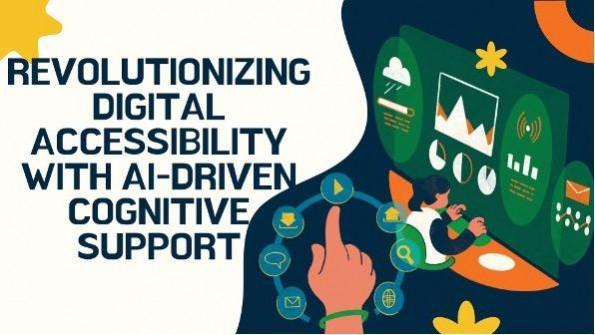
Pioneering Accessibility Through Innovation by Vignesh Kuppa Amarnath has explored groundbreaking developments in digital accessibility, emphasizing how artificial intelligence is transforming user experiences. Key AI-driven advancements designed to create adaptive, personalized digital environments, ensuring a more inclusive digital landscape for all.
Voice Interaction: Redefining Communication
One of the most promising advancements in digital accessibility is AI-powered voice interaction. Natural language processing (NLP) has significantly improved the efficiency of voice recognition systems, enabling seamless communication between users and digital interfaces. These AI-driven systems continuously learn from user interactions, refining their accuracy and responsiveness. With improved speech pattern recognition, these systems offer personalized assistance, benefiting individuals with cognitive disabilities and enhancing overall accessibility.
Adaptive Color Optimization: Enhancing Visual Accessibility
AI-powered color optimization technology is another innovation revolutionizing digital accessibility. Traditional interfaces often fail to account for varying visual processing needs, but machine learning algorithms now enable real-time color adjustments. These adaptive systems enhance contrast, optimize readability, and personalize visual experiences based on user preferences. Such advancements reduce visual fatigue and improve engagement, particularly for individuals with color vision deficiencies or sensory sensitivities.
Smart Screen Adaptation: Personalized Interface Design
Screen size adaptation, powered by AI, is addressing the challenges of content accessibility across different devices. Intelligent screen layout optimization dynamically adjusts interfaces based on user behavior, device specifications, and cognitive preferences. By analyzing user interaction patterns, AI can generate personalized layouts that minimize cognitive load, improve information retention, and enhance navigation efficiency. These adaptive layouts are particularly beneficial in educational and workplace settings, where diverse accessibility needs must be met.
Furthermore, AI-driven responsive design systems incorporate machine learning algorithms to predict user preferences and automatically adjust content hierarchy, typography scaling, and interactive element positioning. This predictive capability ensures seamless transitions between devices while maintaining optimal readability and user engagement. The technology also considers factors like ambient lighting, user distance from the screen.
Integrating AI for a Unified Accessibility Approach
The synergy between AI-driven voice interaction, color optimization, and screen adaptation is paving the way for a more inclusive digital environment. By integrating these technologies, developers can create cohesive systems that respond to diverse user needs in real time. Organizations implementing AI-driven accessibility solutions report significant improvements in user satisfaction, reduced customer support requests, and enhanced digital experiences. The use of automated testing tools powered by machine learning ensures that accessibility features remain functional and effective across platforms.
Moreover, these integrated AI systems leverage advanced natural language processing to provide contextually aware responses, adapting communication styles to user preferences and abilities. The combination of biometric feedback and behavioral analytics enables dynamic adjustments to interface elements, creating personalized experiences that evolve with user needs. Implementation of federated learning techniques allows organizations to improve accessibility features while maintaining user privacy, leading to more robust and ethically conscious digital solutions. This holistic approach to accessibility demonstrates the transformative potential of AI in creating truly inclusive digital spaces.
Overcoming Challenges and Advancing Innovation
While AI-driven accessibility solutions are transforming digital experiences, challenges such as initial adaptation difficulties, privacy concerns, and implementation inconsistencies remain. However, ongoing advancements in deep learning and neural networks are addressing these challenges by refining personalization mechanisms and enhancing security frameworks. Future developments in AI, such as quantum computing and distributed processing, hold the potential to further optimize accessibility solutions, making digital spaces even more inclusive.
In Conclusion,Vignesh Kuppa Amarnath underscores the transformative potential of AI in digital accessibility. By integrating multimodal cognitive support technologies, AI is not only improving user engagement but also reshaping the future of digital inclusivity. As innovation continues, these advancements will play a crucial role in creating more adaptive, responsive, and personalized digital environments for all users.








![Sky is the limit: IndiGo is now tenth largest airline by capacity globally; growth indisputable [details]](https://data1.ibtimes.co.in/en/full/767455/sky-limit-indigo-now-tenth-largest-airline-by-capacity-globally-growth-indisputable-details.jpg?w=220&h=138)








